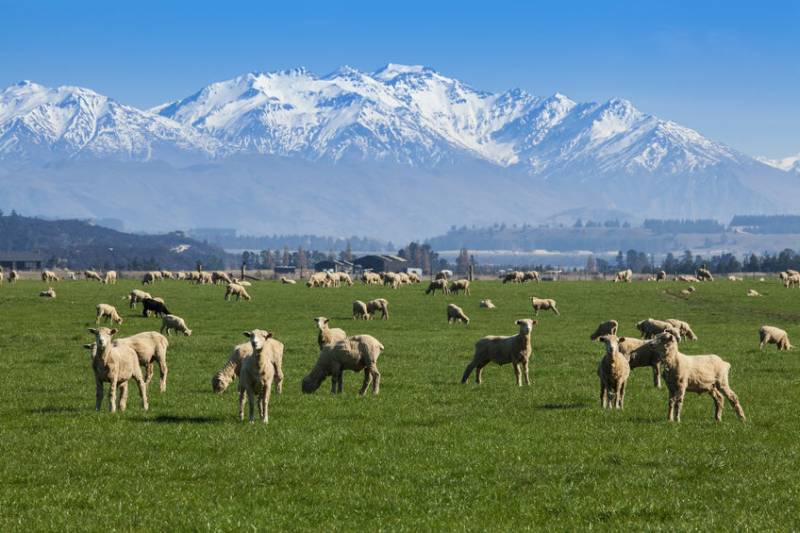
Sheep farmers in New Zealand are now able to breed 'low methane' sheep in a bid to reduce the country's greenhouse gas emissions.
New Zealand, which has approximately six sheep for every person, has introduced the 'global first' genetic program to combat climate change.
The 'methane research breeding value' has been launched by trade body Beef and Lamb New Zealand (BLNZ).
Breeding value (BV) is a term used to help select important traits that ram breeders want to bolster within their flock.
Breeders wanting to pursue the methane breeding value will need to measure a portion of their flock using Portable Accumulation Chambers.
Sheep spend 50 minutes in the chambers, where their gas emissions are measured. This happens twice, at a 14-day interval.
The resulting information is then used alongside other genetic information to calculate the methane breeding value.
North Island stud breeder Russell Proffit said farmers are more interested in the breeding value than anticipated.
He said his commercial farmer clients have already expressed interest in the methane breeding value.
“They are thinking about this issue and looking for ways to make progress.
“I’ve undertaken the methane BV measurements because I believe an animal that is healthy and doing well should produce less methane and I wanted to test that.
“I don’t know if that’s the case yet, but either way breeding for less methane complements what we are working to achieve on our stud.
“That is, more robust rams that require less inputs and make less demand on the environment.”
BLNZ chief executive Sam McIvor added that this interest was reinforced in recent research of 1000 farmers, where tools and information to reduce greenhouse gas emissions were among farmers’ top five on-farm priorities.
Interested farmers will have access to rams within two years – the time it will take to breed and grow rams on a commercial scale.
Pastoral Greenhouse Gas Research Consortium (PGGRC), which helped BLNZ launch the BV, said the new breeding value takes advantage of the fact individual sheep vary in their levels of methane emission and these differences are passed on to the next generation.
The consortium's general manager Mark Aspin said: “This is a global first for any species of livestock.
“Launching the methane breeding value gives New Zealand’s sheep sector a practical tool to help lower our agricultural greenhouse gases.
“This is significant. Up until now, the only option available to farmers wanting to lower their greenhouse gas emissions has been to constantly improve their overall farming efficiency.
“This takes us a step further – towards actually lowering sheep methane emissions, in keeping with the sector’s commitment to work towards reducing its greenhouse emissions.”
Although progress via breeding can be slow – around 1 percent per year, assuming a breeder was selecting only for methane – it is cumulative and has no negative impact on productivity.
Mr Aspin added that it is important to note that the biggest influence on methane emissions is the amount of feed an animal eats.
“To that end, the consortium is working on another three technologies, with a focus on reducing the amount of methane generated by feed.
“So, by breeding sheep that produce less methane per mouthful eaten – as other methane-reducing technologies come on stream – the influence of these sheep on the national flock’s methane production becomes compounding.”
In the UK, the industry's ongoing 'Grass to Gas' project is aiming to improve the animals’ feeding efficiency and cut down on methane emissions.
Led by researchers from Scotland’s Rural College (SRUC), the first phase of the three-year project will run until September 2022.
